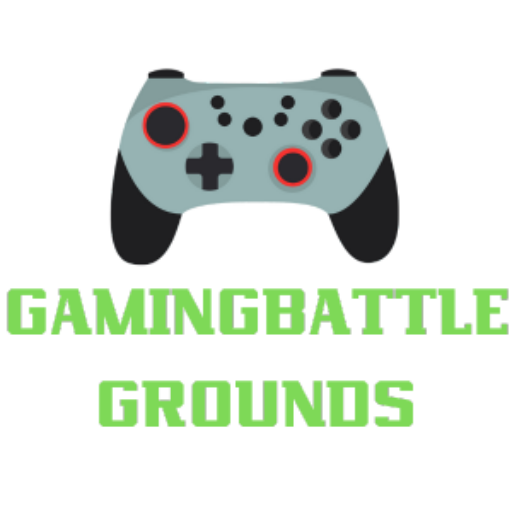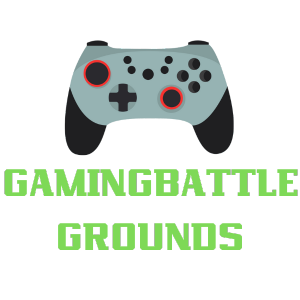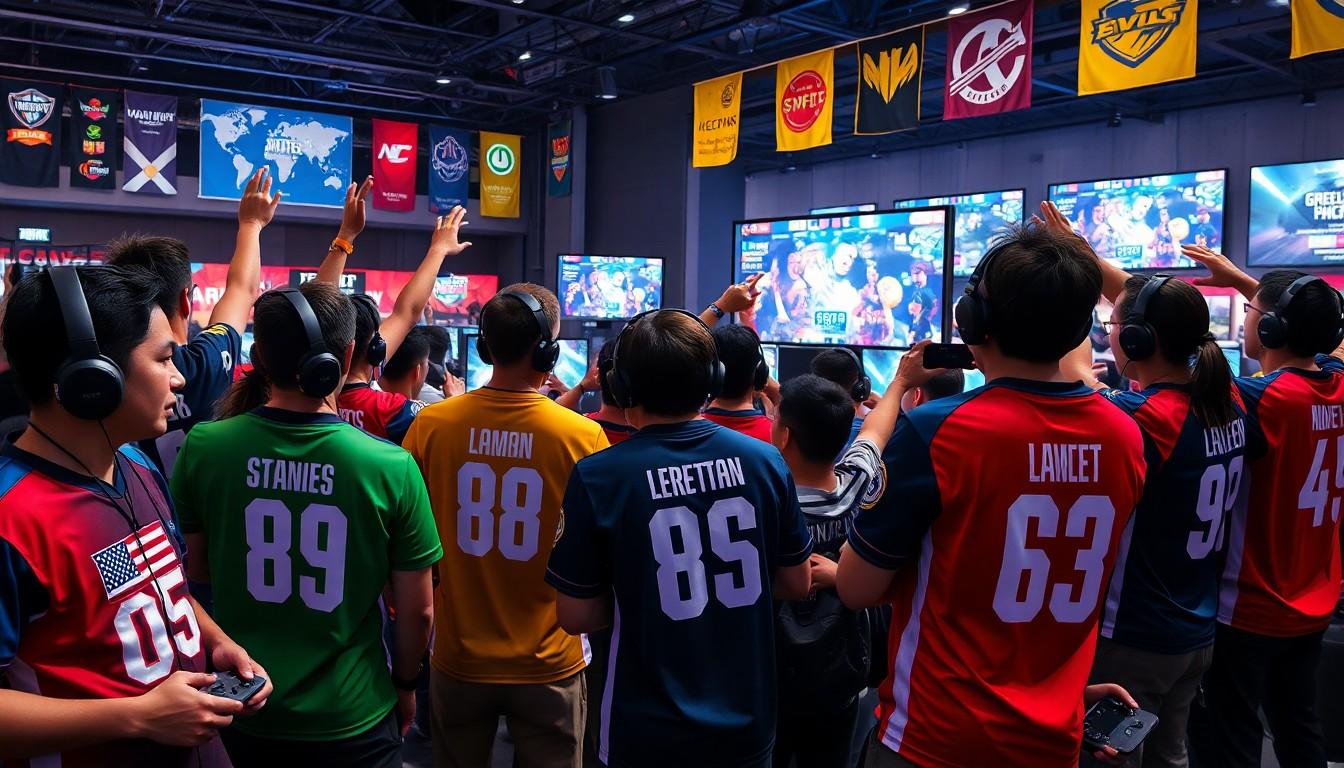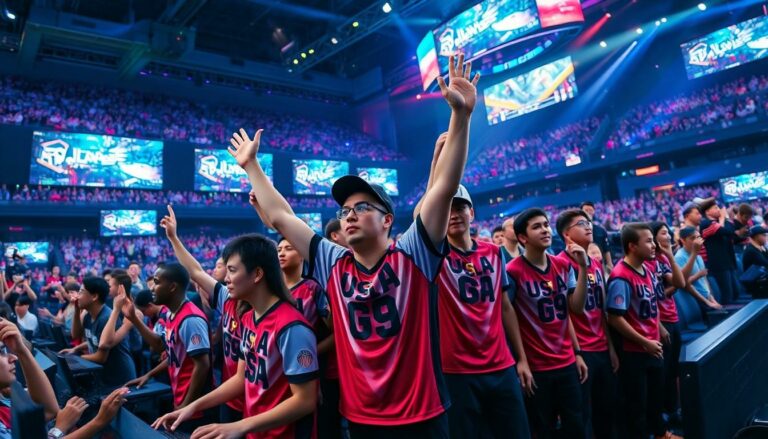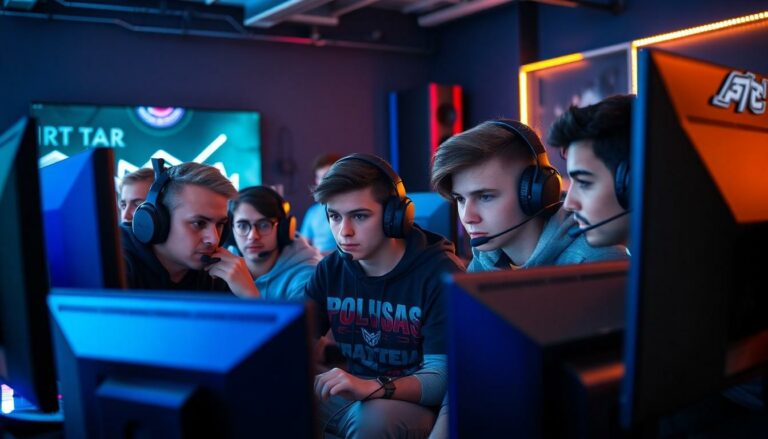In the vibrant world of gaming, a logo isn’t just a pretty picture; it’s a badge of honor, a battle cry, and sometimes, a meme waiting to happen. As gamers rally behind their favorite teams, those logos become symbols of pride, rivalry, and a touch of chaos. Whether it’s a fierce dragon or a cheeky pixelated character, these designs pack a punch that can make or break a team’s identity.
But let’s face it: some logos are so iconic they could probably win a beauty pageant—if only they had legs. From sleek and modern to downright bizarre, the creativity behind gaming team logos is a spectacle worth exploring. So grab your controller and let’s dive into the wild world of logos that not only represent teams but also bring a smile to every gamer’s face.
Gaming Teams Logos
Gaming team logos serve as crucial identifiers that foster team spirit and community connection. Designs vary significantly, reflecting the unique characteristics and values of each team. A logo’s color scheme frequently communicates a team’s personality, whether it is bold and aggressive or playful and lighthearted.
Elements like mascots, symbols, and typography contribute to the overall branding of gaming teams. These features not only distinguish teams from one another but also create memorable visuals for fans. Various teams opt for minimalist logos, emphasizing simplicity, while others embrace intricate designs that capture attention.
Emotions run high during competitive play, and logos amplify these sentiments. Fans wear merchandise featuring their team’s logo, instantly creating a sense of belonging. Many teams leverage their logos in marketing materials, establishing a recognizable brand presence in tournaments and esports events.
Cultural influences also shape logo designs, reflecting themes from popular media, art, and local traditions. Some logos draw inspiration from mythology or historical narratives, adding layers of meaning. This creativity results in a rich tapestry of visual stories that resonate with audiences.
Moreover, the evolution of gaming logos mirrors advancements in design technology. High-quality graphics and innovative design software enable teams to produce eye-catching logos that stand out in crowded arenas. This advancement offers opportunities for branding that captivate audiences across various platforms.
Gaming team logos encapsulate pride, identity, and creativity. These symbols unite fans and teams, embodying the essence of gaming culture while continuing to evolve with the industry.
Importance of Logos in Esports
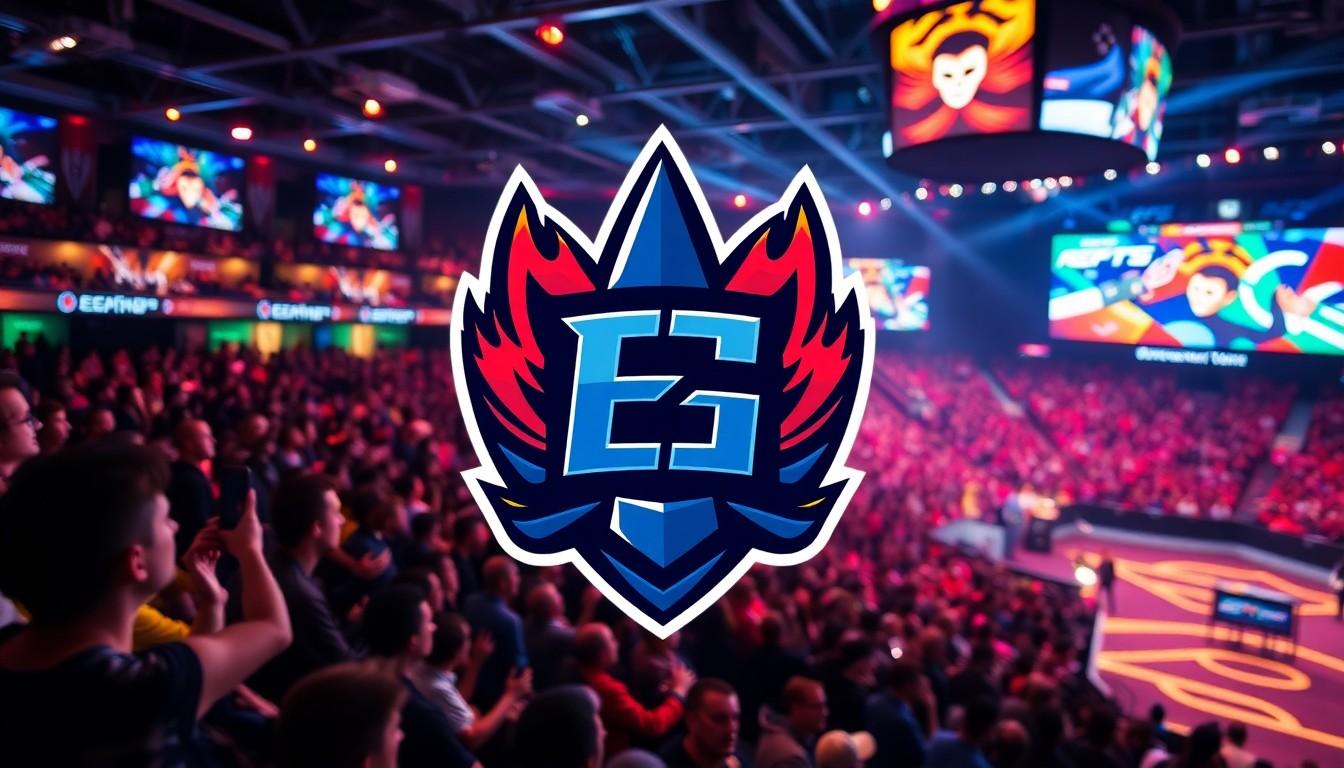
Logos play a vital role in the world of esports, serving as visual representations of teams. Their significance extends beyond mere aesthetics.
Branding and Identity
Logos contribute to a team’s branding and identity, acting as visual shorthand for their values and mission. Unique designs set teams apart in a crowded market, ensuring they capture attention. Colors communicate personality traits; for example, red often signifies passion and aggression, while blue can indicate trust and calmness. Incorporating mascots or symbols further strengthens brand recognition. Such elements create an immediate connection with fans, conveying the essence of the team at a glance. Crafting a memorable logo influences a team’s overall reputation, establishing a lasting presence in the competitive landscape of esports.
Fan Engagement
Fans engage deeply with logos, creating a strong sense of loyalty and belonging. A recognizable logo often sparks conversations, fostering community among enthusiasts. Merchandise featuring these designs becomes a badge of honor for fans, allowing them to express support and pride. Many fans actively seek out apparel and accessories, turning logos into status symbols within gaming culture. Events like tournaments amplify this connection, where logos serve as rallying points for collective excitement. A well-designed logo resonates emotionally, transforming casual observers into dedicated supporters who embrace the team’s journey.
Design Elements of Effective Logos
Effective gaming team logos incorporate various design elements that resonate with fans and embody team identity.
Color Schemes
Color schemes play a critical role in logo design. They evoke emotions and convey personality traits. For instance, red often represents aggression and passion, while blue can symbolize trust and loyalty. Teams carefully select colors that reflect their values and mission, ensuring that fans can quickly identify them. A harmonious color palette enhances visual appeal, making logos more memorable. When fans see these colors, they associate them with the team’s spirit and energy. Ultimately, a well-chosen color scheme strengthens brand recognition and fosters emotional connections with supporters.
Typography
Typography significantly impacts logo effectiveness. Unique fonts capture attention and convey the team’s character. Bold, angular typefaces convey strength, while softer, rounded fonts may suggest friendliness and approachability. Teams often customize typography to reflect their branding, creating a distinctive presence in the competitive landscape. Font choices also influence readability, ensuring logos remain legible across various applications. Consistency in typography creates unity across merchandise and promotional materials, reinforcing the team’s identity. The right font can make a logo stand out, creating lasting impressions among fans.
Iconography
Iconography forms an essential part of logo design. Symbols often represent mascots, values, or historical references, giving teams a distinct identity. Effective icons are simple yet meaningful, allowing for easy recognition. For example, mythical creatures or abstract shapes can evoke specific themes associated with a team’s brand. Teams often integrate icons seamlessly within the overall logo, enhancing visual cohesion. Moreover, these symbols can reflect cultural influences, adding depth to the story behind the logo. Strong iconography not only aids in brand recognition but also fosters a sense of pride and belonging among fans.
Notable Gaming Teams Logos
Prominent gaming teams feature logos that capture their essence and energize their fan base. Recognition of these logos extends beyond aesthetics; they embody a sense of belonging and competitive spirit.
Iconic Esports Teams
Team logos like those from Team SoloMid, Fnatic, and Cloud9 command attention. TSM’s logo reflects a modern look with its sharp lines and simplistic design. Fnatic’s orange and black tiger emblem exudes fierceness. Cloud9 embraces a cloud symbol that communicates agility and adaptability. Each logo represents the team’s ethos and helps fans connect emotionally.
Evolution of Logos Over Time
Logos have undergone significant changes, adapting to trends and fan preferences. Early designs emphasized bold graphics and straightforward imagery. Modern logos, however, focus on sleekness and versatility, often incorporating minimalist styles. Iconography has shifted towards abstract representations that convey deeper meanings, reflecting the evolving nature of gaming culture. Teams revise their branding strategies to maintain relevance and grow their fan bases, showcasing the dynamic landscape of esports branding.
Controversies and Trademark Issues
Trademark disputes frequently arise in the gaming industry, particularly concerning team logos. Many teams invest significant resources into creating unique designs, aiming to distinguish themselves in a saturated market. Conflicts often surface when logos closely resemble existing trademarks, leading to legal battles that can disrupt team branding efforts.
An example includes the 2018 case involving Team Secret and a clothing company that produced merchandise with a logo strikingly similar to theirs. Such cases highlight the necessity for teams to conduct thorough trademark searches before finalizing their logos. Conversely, some teams evolve their logos over time to avoid potential conflicts and to refresh their brand images.
Issues regarding copyright infringement may also present challenges. Several teams have faced scrutiny for adopting designs influenced by popular culture, leading to debates over originality. The situation escalates when creators of original content assert their rights, compelling teams to either pay licensing fees or modify their logos.
Furthermore, fan reactions to logo changes can complicate matters. Teams often confront backlash when altering logos perceived as integral to their identity. Maintaining a balance between refreshing a brand and honoring tradition requires careful consideration.
Gaming organizations continually navigate these challenges while striving for brand integrity. Protecting intellectual property must align with creative expression, ensuring that logos represent unique identities without stepping on others’ toes. Emphasizing originality in design helps foster positive relationships within the gaming community, yet disputes remain an unavoidable aspect of branding in the competitive esports landscape.
Gaming team logos are powerful symbols that resonate deeply within the gaming community. They embody team identity and foster a sense of belonging among fans. The creativity behind these logos reflects the diverse personalities and values of the teams, creating memorable visuals that enhance brand recognition.
As esports continues to evolve, logos must adapt to trends while maintaining their unique essence. The emotional connections fans form with these designs are crucial for building loyalty and community. Navigating the complexities of branding and trademark issues adds another layer of significance to these logos.
Ultimately, a well-designed logo can elevate a team’s presence in the competitive landscape, making it an essential aspect of gaming culture that deserves appreciation and respect.
